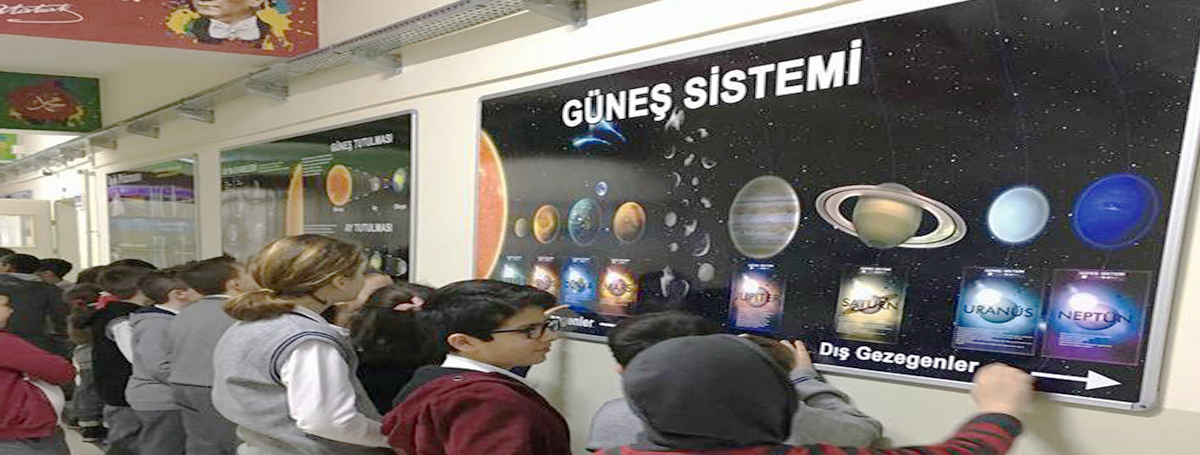
Throughout the Ottoman Empire, an essential goal of education was to raise 'excellent Muslims'. Thus there was a requirement for Islamic scholars, which was sustained through Islamic Faith Schools, called Madrasa.In 1913, the Medresetü-l Eimmeti vel Hutaba (School of ministers and preachers Medresetü-l Vaazin were combined to form the concrete origins of today's Imam Hatip high schools
In 1924, the Tevhid-i Tedrisat (Law of Marriage of Educational Guideline was passed, changing the existing, mainly sectarian instructional system with a secular, centralist and nationalist education one. The brand-new law brought all universities under the control of the Ministry of National Education. A Faculty of Theology at the Darülfünun (Istanbul University), unique schools for training imams and hatips (ministers and preachers) were opened by the brand-new Ministry of National Education. Nevertheless, in 1930 İmam Hatip schools were closed and 1933 the Professors of Divinity was eliminated.
In contrast to the specifically secularist nature of the education policy of the Republican politician Individuals's Celebration (CHP) religious education was restored in 1948. This included the facility of a Professors of Theology at the University of Ankara in 1949. Initial steps for the establishment of Imam Hatip schools began in 1951 under the Democrat Party government, which set up 7 special secondary schools (Imam Hatip Okulları). In addition, in 1959 Islamic Institutes were opened for graduates of Imam Hatip schools.
Following the coup d'etat in 1960, Imam Hatip schools experienced the danger of closure. Following the go back to civilian politics and the introduction of the brand-new constitution in 1961, graduates of Imam Hatip schools could just enrol in university programs if they had actually passed courses offered at nonreligious schools. Throughout the premiership of Süleyman Demirel nevertheless, graduates of Imam Hatip schools were provided access to university without such requirements. The 1971 Turkish coup d'état introduced 2 crucial reforms: to start with junior high Imam Hatip schools were abolished, and in 1973 Imam Hatip schools were renamed as Imam Hatip high schools. Under the subsequent National Education Basic Law, Imam Hatip schools were specified as trade schools, where trainees were to be trained as preachers and ministers or gotten ready for higher education.
Imam Hatip schools grew slowly initially, but their numbers broadened rapidly to 334 during the 1970s. The union government of 1974, established by the CHP and the MSP (National Salvation Party), devoted to resume junior highs and giving the right of entry to university through evaluation. 230 brand-new Imam Hatip high schools were opened in a duration of nearly four years. Throughout the 1974-75 school year the variety of trainees addressing the Imam Hatip high schools grew to 48,895. This number consequently grew to 200,300 by 1980-81. In addition, women acquired the right of entry to Imam Hatip high schools in 1976. The expansion of Imam Hatip high schools is often pointed out as the impact of the National Salvation Celebration's subscription of a number of coalitions with Nationalist Front governments.
Circumstance since 1980
The coup d'etat of September 12, 1980 is an important turning point in the history of Turkey and likewise for the history of Ä°mam-Hatip high schools. Under military governance, graduates of Imam Hatip high schools acquired the right of entry to all university departments. In 1985, 2 new Imam Hatip high schools opened, one in Tunceli, despite of the so-called ethnic structure of the region, and the other in Beykoz as an Anatolian Imam Hatip High School, with the goal of contributing to the education of kids of families who work abroad. Although the number of Imam Hatip high schools had actually not increased since, the variety of trainees participating in Imam Hatip high schools has actually increased by 45%. more info This is partly due to the improvement in the quality of Imam Hatip high schools and the education offered at such schools.
During the education year of 1973-74, the total variety of Imam Hatip trainees was 34,570; in 1997 this number had greatly increased to reach 511,502. Alongside this massive increase in appeal, the variety of schools also increased. The number of Imam Hatip junior high reached 601 and senior high schools 402. The boost in both trainee and school numbers can be associated to aspects including the dedication of individuals to religion, dorm room facilities, scholarships, the admittance of females and an increase in need for religious education.
Research study suggests that between the years of 1993 and 2000, prospective students registered at Imam Hatip high schools mainly to receive religious tutoring together with a more basic education.In addition, research study shows enrolment at Imam Hatip high schools was based exclusively on the trainee's decision. The third suggested consider the rise in appeal of Imam Hatip schools is the admission of female trainees in 1976. By 1998, practically 100,000 women attended Imam Hatip high schools, making up practically half of all students. This fact is particularly revealing because women are not qualified to end up being either priests or ministers.
Nevertheless, the introduction of eight years of mandatory education in 1997 has seen a sudden decrease in the popularity of Imam Hatip schools. In 1999, the reclassification of Imam Hatip schools as "professional schools" meant that, although more options had been provided to graduates, achieving places at prestigious university courses ended up being more difficult.By needing that all 8 obligatory years of education be invested under the very same primary-school roofing system, middle schools were abolished. Kids could not enter vocational schools (among them the Imam Hatip school) up until the ninth grade (rather than the 6th, as before).